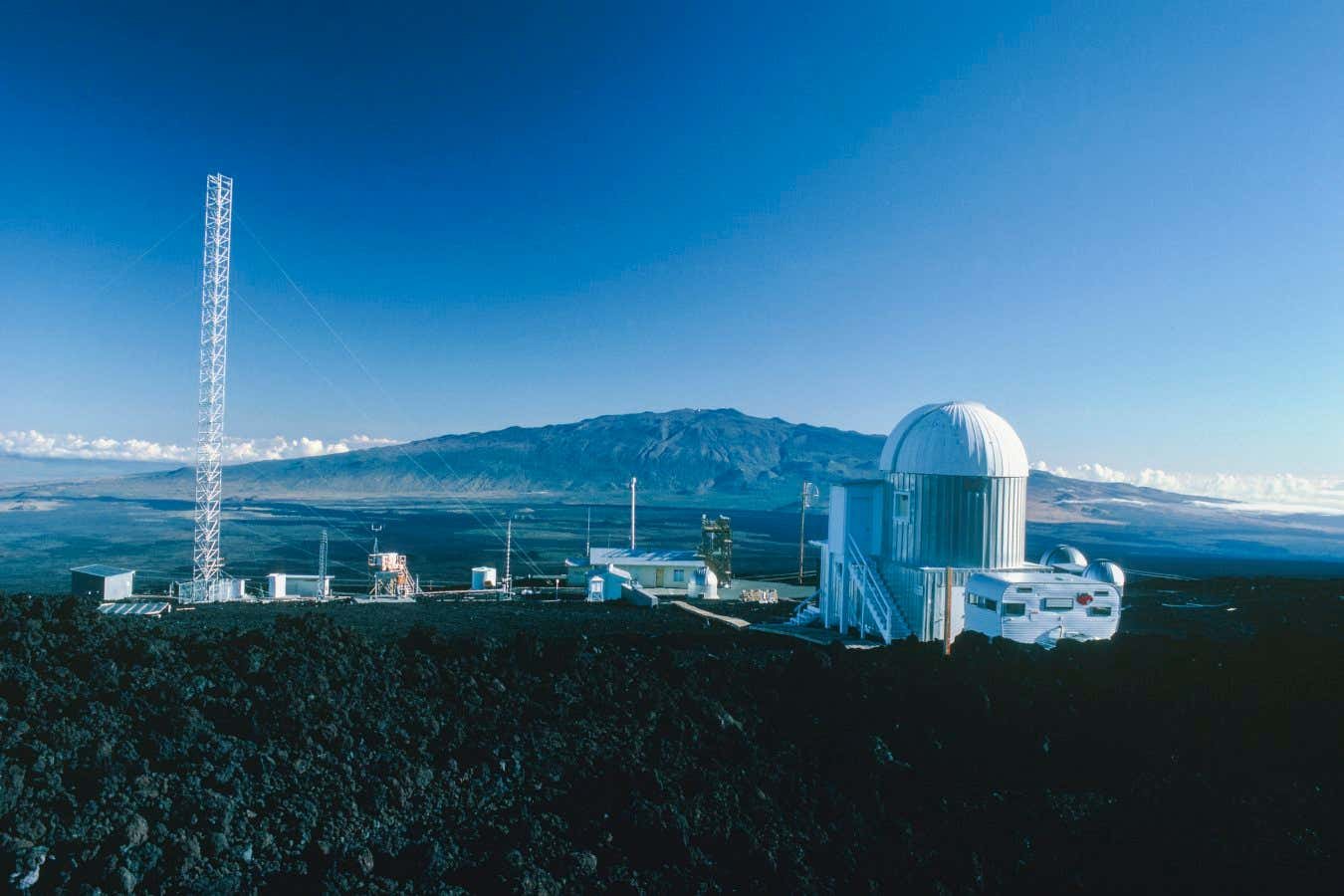The Mauna Loa Observatory in Hawaii has been recording atmospheric carbon dioxide levels since 1958
FRED ESPENAK/SCIENCE PHOTO LIBRARY
Levels of carbon dioxide in the atmosphere measured by a weather station at the Mauna Loa Observatory in Hawaii rose by 3.58 ppm in 2024 — the biggest jump since records began there in 1958.
“We’re still going in the wrong direction,” says climate scientist Richard Betts of the Met Office, Britain’s weather service.
The record increase is due in part to CO2 emissions from burning fossil fuels and other human actions, such as cutting down forests, which hit record highs in 2024. Added to this was a large number of wildfires, driven by record global temperatures enhanced by the El Niño weather pattern on top of long-term warming .
Betts predicts that atmospheric CO2 levels measured at Mauna Loa this year will increase by 2.26 ppm, with a margin of error of 0.56 ppm either way. That’s much less than the 2024 record, but it will take us beyond the last possible path to limiting the rise in global surface temperatures to 1.5°C above pre-industrial levels.
“You could look at it as another nail in the coffin of 1.5°C,” says Betts. “That is now vanishingly unlikely.”
The level of CO2 in the atmosphere is the most important measure when it comes to climate change, because increasing atmospheric CO2 is the main factor driving both short- and long-term warming. The first ongoing measurements of CO2 levels were made at Mauna Loa.
“Because this station has the longest time record and is also located far away from the main anthropogenic and natural emissions and sinks of CO2, it is often used to represent global changes in CO2 concentrations,” says Richard Engelen of the EU’s Copernicus Atmosphere Monitoring Service.
With observations from satellites, however, it is now possible to directly measure the average global level of atmospheric CO2. According to CAMS, it increased by 2.9 ppm in 2024. That’s not a record, but it’s one of the biggest increases since satellite observations began.
“The reason for this larger increase needs further investigation, but it will be a combination of increased emissions in large parts of the world after the covid pandemic in combination with annual variations in the natural carbon sink,” says Engelen. The carbon sink refers to the oceans and ecosystems on land, which have absorbed about half of the CO2 emissions caused by humans.
It has long been predicted that as the planet warms, less of this excess CO2 will be absorbed. “Where this is the start of it, it’s concerning,” Betts says. “We don’t know.”
At Mauna Loa, the increase in CO2 is higher than the average global level due to the large number of wildfires in the Northern Hemisphere in 2024, Betts says. It takes time for CO2 plumes from sources like wildfires to mix evenly in the atmosphere around the world. “Fire emissions in the Northern Hemisphere were particularly large last year,” he says.
Although it now seems certain that global warming will pass the 1.5°C limit, Betts believes it was still right to set it as a target. “The Paris Agreement was carefully worded – to pursue effects to limit warming to 1.5. It was recognized from the start that it was going to be challenging,” he says. “The idea was to have this stretch goal to motivate action, and indeed I thought it was successful. It spurred action.”
Subjects:
